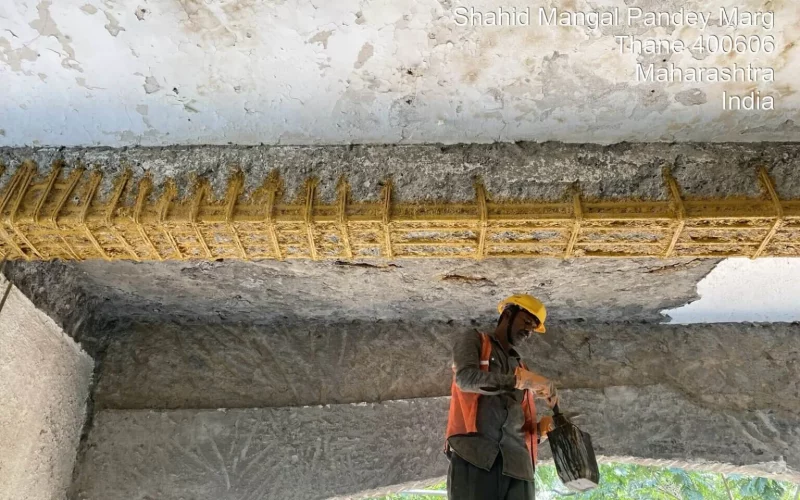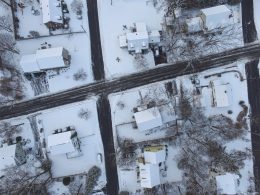Introduction
Shotcreting has become one of the most widely adopted construction techniques in India, particularly for structural repair and slope stabilization projects. With growing urban development and infrastructure challenges, this method offers engineers and contractors an efficient way to strengthen existing structures or build new ones with durability and cost-effectiveness. As demand for reliable concrete application methods increases, shotcreting is becoming a preferred solution for tunnels, bridges, retaining walls, and even building rehabilitation projects.
What is Shotcreting?
Shotcreting, also known as sprayed concrete, is the process of applying concrete at high velocity onto a surface using compressed air. Unlike traditional concrete placement, this method ensures strong bonding with the base material while reducing voids and improving density. This makes it ideal for vertical or overhead applications where normal concrete pouring would be difficult. The shotcreting process is available in two types—dry mix and wet mix—each suited for different site conditions and project requirements.
Dry Mix vs Wet Mix Shotcreting
The dry mix shotcreting process involves propelling dry cement and aggregate through a hose, with water added at the nozzle. This method is highly flexible for remote sites and repair jobs, where water control is important. On the other hand, wet mix shotcreting involves pre-mixing all ingredients before spraying, which produces higher output and consistent quality. Contractors usually select the method depending on project size, accessibility, and structural needs.
Applications of Shotcreting in India
In India, the use of shotcreting has grown rapidly across different industries. Infrastructure projects such as metro rail tunnels, hydropower plants, flyovers, and underground stations rely heavily on this technique. It is also widely used for slope protection, structural strengthening, and retrofitting of old buildings. Urban areas with limited working space often prefer shotcreting, since it allows concrete placement in confined areas while ensuring durability and structural integrity.
Shotcreting for Tunnels and Underground Works
Tunnel construction and underground metro projects are some of the biggest beneficiaries of shotcreting technology. The ability of shotcrete to adhere to irregular rock surfaces and stabilize them immediately makes it crucial for excavation safety. In cities like Mumbai, Delhi, and Bangalore, where large-scale metro networks are expanding, shotcreting provides engineers with the reliability and speed needed for such complex underground works.
Benefits of Shotcreting
Shotcreting offers several advantages compared to conventional concrete placement. It provides high strength and durability, ensures strong adhesion to different surfaces, and minimizes the need for complex formwork. Since it can be applied directly on vertical and overhead surfaces, it reduces construction time significantly. Additionally, shotcrete’s compact and dense finish offers better resistance against water seepage, making it suitable for water-retaining structures such as swimming pools, dams, and reservoirs.
Shotcreting for Slope Stabilization
India’s hilly regions face frequent landslides and soil erosion, making slope protection a major challenge. Shotcreting is widely used for slope stabilization projects, where concrete is sprayed over wire mesh or reinforcement to prevent rockfalls and soil displacement. Highways and railways running through mountainous areas rely on this method to ensure safe passage and prevent accidents caused by unstable slopes during heavy rains or seismic activity.
Role of Shotcreting in Structural Repairs
Aging buildings and infrastructure in Indian cities often require strengthening and rehabilitation. Shotcreting is highly effective for repairing cracked beams, damaged columns, and deteriorated walls. Since it can be applied directly to existing surfaces, it eliminates the need for dismantling structures, saving both time and costs. Many structural repair contractors prefer shotcreting because it not only restores strength but also extends the life of the structure significantly.
Shotcreting in Dam and Canal Projects
Large water-retaining structures such as dams, canals, and reservoirs require concrete surfaces that can withstand continuous water pressure. Shotcreting is increasingly being used for lining canals, repairing dam spillways, and strengthening water-retaining walls. Its dense, impermeable surface provides excellent resistance to seepage, ensuring long-term durability. This makes it an essential technique for irrigation and hydropower projects across India, where water conservation and safety are top priorities.
Shotcreting vs Traditional Concrete Placement
Unlike traditional concrete pouring, shotcreting reduces the need for formwork, making it a more cost-effective and time-saving solution. In projects where accessibility is limited, such as high walls or overhead surfaces, shotcreting ensures uniform application without additional support structures. While both methods have their uses, engineers increasingly prefer shotcreting for repair and rehabilitation works due to its adaptability, reduced labor requirements, and improved strength performance.
Modern Equipment and Technology in Shotcreting
Today, advanced machinery such as robotic shotcrete arms, high-capacity pumps, and nozzle systems have made the process more efficient and precise. Modern equipment ensures uniform application, minimizes rebound, and enhances overall safety for workers. Many large-scale projects in India now rely on mechanized shotcreting, which provides better quality control compared to manual spraying, while also increasing productivity on construction sites.
Shotcreting and Sustainable Construction
With growing emphasis on sustainability in construction, shotcreting is being recognized as an eco-friendly option. Since it reduces material wastage, requires less formwork, and ensures long-term durability, it contributes to resource efficiency. The method also supports green construction practices by extending the lifespan of existing structures, reducing the need for complete demolitions and reconstructions, which in turn lowers environmental impact.
Future of Shotcreting in India
The demand for shotcreting in India is expected to grow with rapid urbanization and infrastructure expansion. From metro tunnels in metropolitan cities to slope stabilization in hilly terrains, the technique will continue to play a vital role in construction. With the adoption of advanced shotcrete machines and skilled workforce training, the future looks promising for this technology, ensuring stronger, safer, and more sustainable infrastructure development across the country.
Shotcreting has established itself as a powerful method in modern construction and repair works. Its ability to provide quick, durable, and cost-effective solutions makes it highly valuable for India’s infrastructure needs. Whether for tunnels, slopes, dams, or structural rehabilitation, shotcreting offers unmatched versatility. As more projects adopt this technique, it will not only improve construction efficiency but also contribute significantly to long-lasting and safe urban and rural infrastructure development.
Conclusion
Shotcreting is changing the way India builds strong and durable structures. Its fast application, excellent bonding, and long-lasting strength make it a preferred method for many construction and repair projects. From tunnels and metros to repairing bridges and stabilizing slopes, shotcreting offers versatile and cost-effective solutions for India’s growing infrastructure demands. By choosing skilled professionals and quality materials, you can ensure your project benefits fully from shotcreting technology. With its proven durability and efficiency, shotcreting is set to remain a vital part of India’s construction future.












